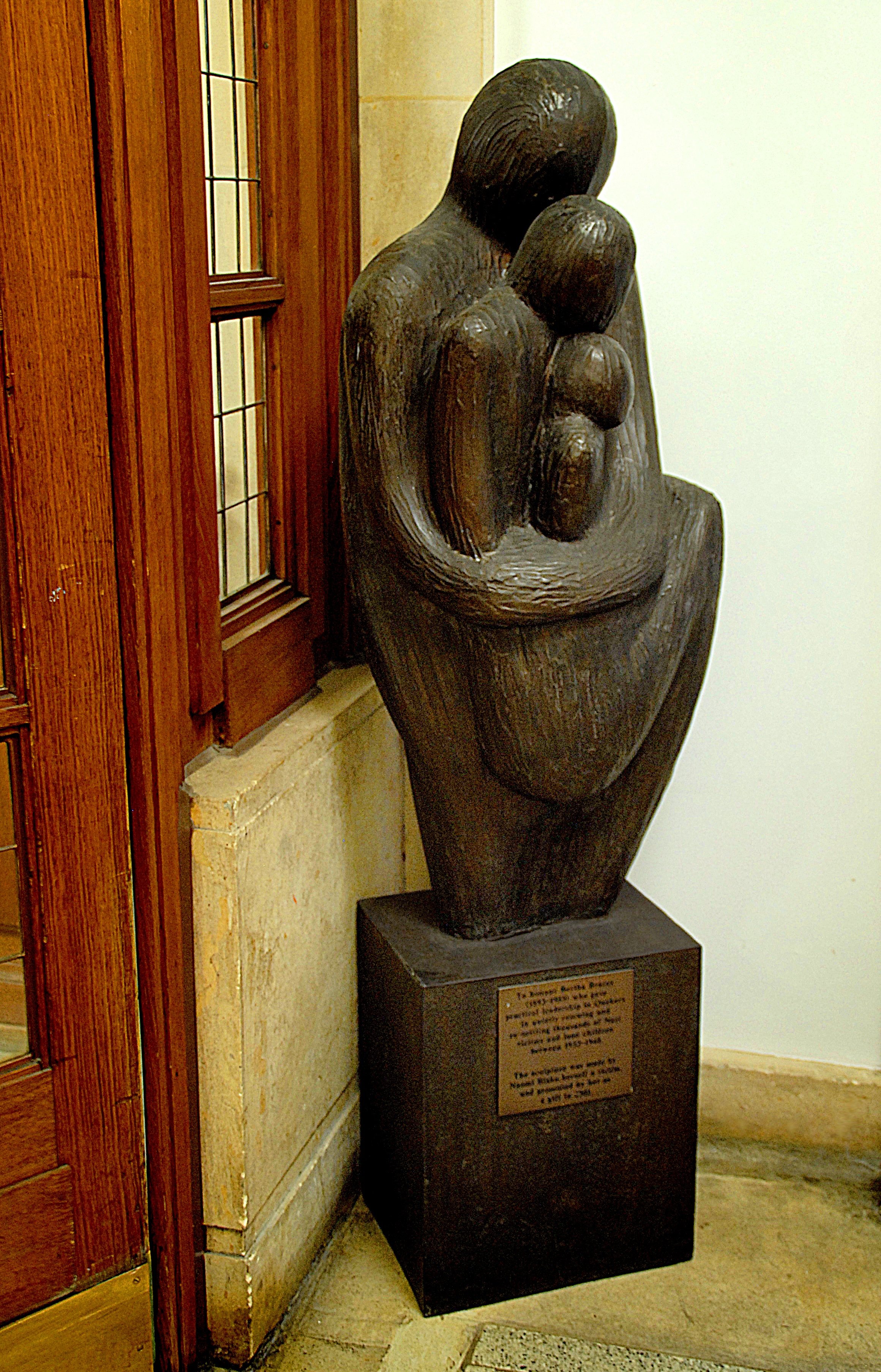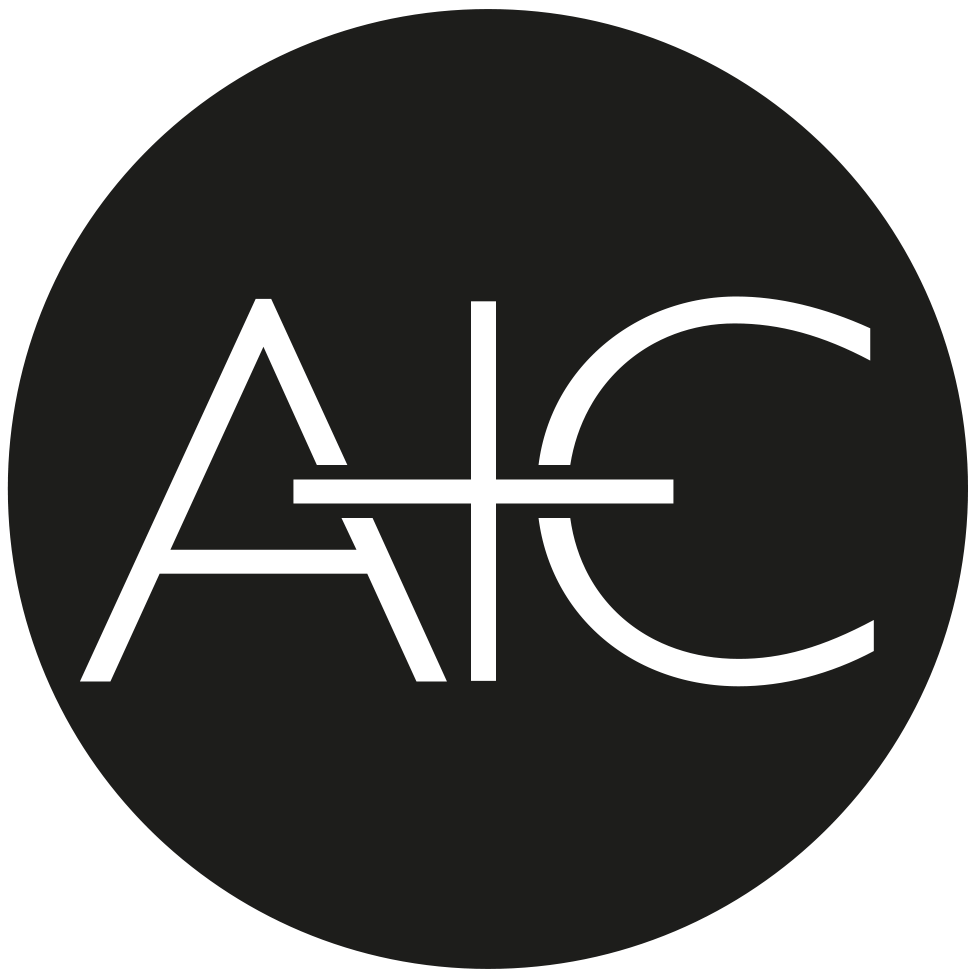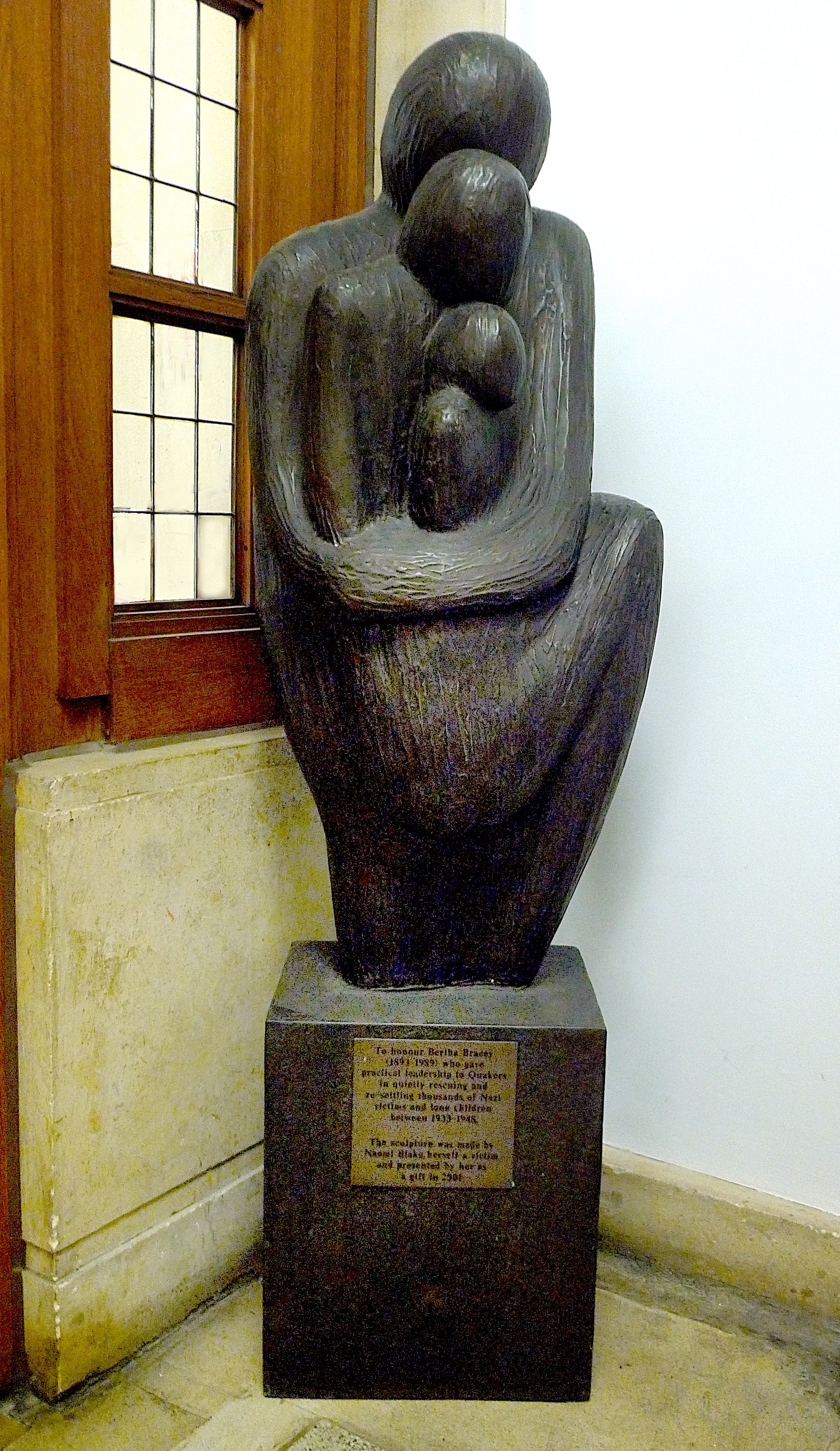Naomi Blake: Family Group

Title: Family Group
Artist: Naomi Blake (1924–2018)
Location: Friends House, Euston
Date: 2001
Nominated by Anita Peleg:
‘“There’s something positive in the human figure – there’s a lot of good in people… With my past, if I were pessimistic, it wouldn’t have been worthwhile surviving.” Naomi Blake
A remarkable thing for a survivor of Auschwitz to say, this positive and hopeful spirit is subconsciously transmitted through Naomi Blake’s sculpture.
Family Group is part of a large group of figurative sculptures created by Naomi Blake FRSS from 1970 to 2010. Here there is something of the love, warmth and security of family, perhaps representing the family she lost in the concentration camps – her parents, brothers, sisters and 10 nephews and nieces – and also representing the new family that she created after the war.
It reveals the latter part of her development as a sculptor: from her early cycle of embryonic forms, enclosed and protective figures, her later work gradually opened out, to ‘free the figure from its haven to stand against all adversity and spread its free wings’, as she put it. Throughout, she wanted her work to preserve collective memory and promote a positive future.
Her involvement with the Council for Christians and Jews and her lifelong friendship with Dr Yvonne Craig, a Quaker, resulted in commissions from several cathedrals and churches across the UK. In 2001, she gave this sculpture Family Group to Friends House in London to recognize the role of Quakers in saving thousands of Jewish children from the hands of the Nazis.
For Naomi her sculpture was a subconscious expression of her past, enabling her to convey a broader message about how we must remember and learn from the past to promote understanding and good will between faiths.’
Dr Anita Peleg is Chair of Trustees for Generation 2 Generation (G2G) a Holocaust education charity, and the daughter of Naomi Blake.
Family Group, in fibreglass and bronze resin, depicts three nested figures, in stylised, smooth lines. Its presence in Friends House in Euston, the central offices and worship space of the Quakers in Britain, marks two important aspects of Quaker witness: the action Quakers have taken over the last 150 years to support and advocate for migrants, refugees and asylum seekers, particularly in organising the Kindertransport from National Socialist Germany, and a commitment to interfaith cooperation and understanding. A plaque on the sculpture’s base reads, ‘To honour Bertha Bracey (1893–1989) who gave practical leadership to Quakers in quietly rescuing and resettling thousands of Nazi victims and lone children between 1933 and 1948.’
Naomi Blake (1924–2018), formerly Zisel or Zissi Düm, was born in Mukačevo, Czechoslovakia (now Mukachevo, Ukraine). In 1944 her family was moved to a ghetto then sent to Auschwitz; Naomi and her sister were separated and forced to work in a munitions factory, where they learnt to sabotage the bombs they were making. The sisters escaped a death march and Naomi emigrated to Mandatory Palestine, moving later to Milan, Rome and Jerusalem, and settling in Muswell Hill in the 1950s. She studied at Hornsey School of Art between 1955 and 1960 and began exhibiting widely from the 1960s. A Fellow of the Royal (British) Society of Sculptors from 1993, her work is held in several collections, with significant permanent works in sites around the country, including Norwich and Bristol Cathedrals and Bournemouth, Oxford and Leeds Synagogues.
Further Information
Medium: Fibreglass and bronze resin
Permanent display
See Naomi Blake’s Family Group on the Ecclesiart map here.
Other artworks in churches by Naomi Blake: Refugee, Bristol Cathedral (1980); Mother and Child, Norwich Cathedral (1984); Sanctuary, St Botolphs without Aldgate, London (1985); Genesis, St Mary and All Saints Church, Little Walsingham, Norfolk (1988), St Ethelburga, St Ethelberga Centre for Peace and Reconciliation (2006).

